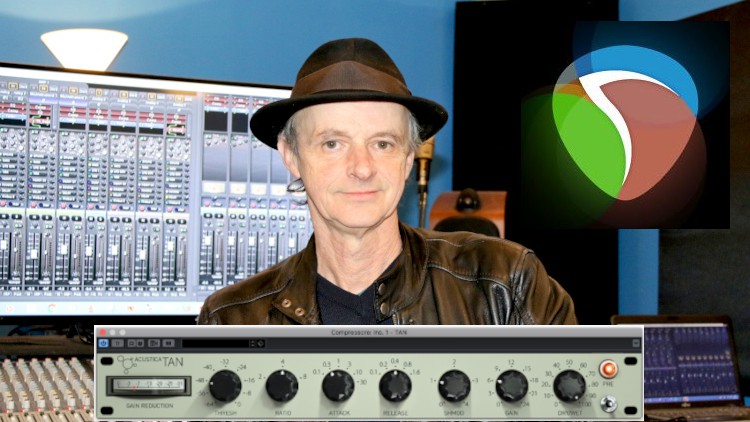Audio Production Level 2 – Compressors

This course: Audio Production Level 2 – Compressors makes compressor theory understandable, and gives many practical aural examples and comparisons (Compressor On, compared with Compressor Off) as well as useful visuals. All the identical audio and plugins used in this course are available for you to download, making the examples very straightforward to follow.
Instead of just giving specific ‘general’ settings for compressing different instruments and sounds, this course provides you with the knowledge so that you can work out your own settings for any given situation. It gives a solid grounding in understanding why you are doing what you are doing, moving forward to a new level in the use of compression.
The Sections:
Ratio – What it is, Ratio range, Gain Reduction and dynamic range. What ratio to use, and how much gain reduction to apply and why. working out the dynamic range. Opening and setting up the Compressor
Attack & Release – Setting up Attack and Release, how the attack and release controls affect the audio, setting the threshold, adjusting the makeup gain, the reason why the longest release settings are not useful, different results with different compressors.
Side Chain – How to set up side chain compression and how it works, accessing the side chain of the compressor, setting the threshold effectively, adjusting the release, looking at block diagrams to understand the route the audio takes, adding an EQ to change what the side chain hears, how to engage the preview filter, how to create a band pass filter using the high pass and low pass controls and what it’s doing
RMS Compression v Peak Compression – What the Peak Compressor deals with, what it does and what it’s good for controlling, what RMS means, what it does and what it’s good for controlling, looking at the time reference, looking at the Master VU Settings metering for Peak compression and RMS compression, and an explanation of the window size.
Parallel Compression – A demonstration of parallel compression in action Looking at three methods for applying parallel compression. Looking at the parallel compressor settings, two points about parallel compression to be aware of, a demonstration on where parallel compression doesn’t work, whether to use Peak or RMS compressors for Parallel Compression, the four main controls on the compressor and their use within Parallel Compression. Parallel compression in the context of a full mix
Mixbus Compression – The two accepted and different ways to set up your Mixbus Compression. Looking at density in a track. Looking at punch, looking at the peak value, looking at the wav files, looking at the output peak and rms meters, looking at the TAN compressor’s individual controls, four pointers to set up the Master bus compressor.
Transient Processer & Dynamic EQ – The different names Transient Processers go by, what they are particularly suited to, how they work, what they do, the names of the two parts that the processer divides the audio into, the volume controls, a demonstration with a transient processer. Looking at Dynamic EQ, what it is, how it compresses compared with a normal compressor, the different names for normal compressors, a comparison between a broadband compressor and a dynamic EQ,
Have a look at some reviews about Audio Production Level 2 – Compressors
* * * * * This is a great course! I now understand a lot about compressors that I had no clue about before. Can’t wait for the next course.
BJ 2021
* * * * * This course is to the point with well thought out explanations. Very well presented.
Adrian 2021
* * * * * I really enjoyed this course. It was very informative but clearly explained and demonstrated. There’s a lot to take in but it is manageable, with the sections and diagrams when needed. I would definitely recommend both Level 1 & 2 of Liam’s Sound Engineering Courses. Thank you!
Stephanie 2020
* * * * * Good course. Well presented. No nonsense, just the practical facts.
Kevin 2020
* * * * * Just buy it, you won’t regret it.
Mecit 2020






